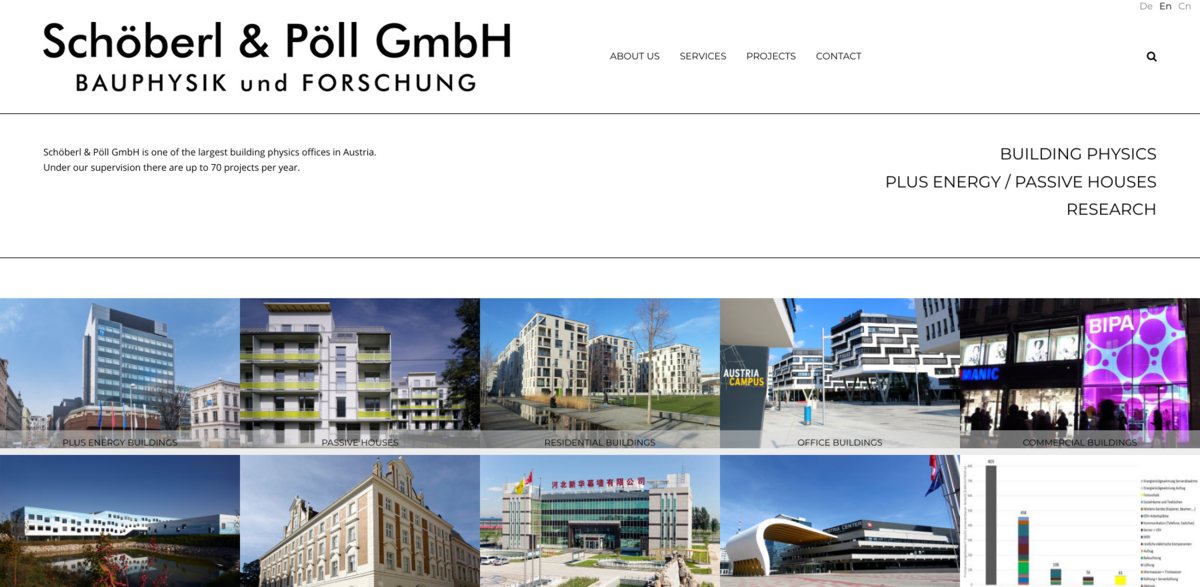What Schoeberl & Pöll GmbH Is All About
Schoeberl & Pöll GmbH stands tall as one of Austria’s largest building physics offices. Based in Vienna and founded back in 1997, this company has carved out a niche in planning and developing energy-efficient buildings. With a team of 12 dedicated employees, they juggle around 60 to 70 projects at any given time. Their mission? To push the boundaries of research and development in highly energy-efficient construction—think passive houses, zero-energy homes, and Plus Energy buildings that actually produce more energy than they consume. Over the years, they’ve completed more than 2,500 residential units and over 100,000 square meters of non-residential buildings. That’s a serious footprint in sustainable architecture and building physics.
Main Benefits and Key Figures
Why does Schoeberl & Pöll GmbH matter? Here’s the lowdown:
- Founded in 1997 with 12 employees specializing in building physics
- Manages 60 to 70 projects simultaneously, ensuring continuous innovation
- Completed over 2,500 residential units and 100,000 m² of non-residential buildings
- Focus on energy-efficient construction including passive houses and Plus Energy buildings
- Expertise in consulting, funding opportunities, and implementation support
- Significant contribution to resource efficiency and climate stabilization
Current Focus: Out of Oil and Gas
The company’s current motto? “Out of oil and gas.” It’s not just a catchy phrase—it’s a commitment. Schoeberl & Pöll GmbH partners with clients to explore funding opportunities, provide expert consulting, and support implementation of sustainable energy solutions. Their approach is holistic, covering everything from building physics to certification and energy certificates. This means they’re not just designing buildings; they’re shaping a future where energy self-sufficiency is the norm, not the exception.
Specialized Project Areas
They cover a broad spectrum of project types, each with its own unique challenges and goals:
- Plus-Energy: Buildings that generate more energy than they consume.
- Passive House: Ultra-low energy buildings designed for maximum efficiency.
- Residential Buildings: Tailored solutions for homes that prioritize sustainability.
- Office Buildings: Energy-smart workplaces that reduce operational costs.
- Commercial Buildings: Efficient designs for retail and business spaces.
- Public Buildings: Sustainable infrastructure for community use.
- Renovations: Upgrading existing structures to meet modern energy standards.
- Certification & Energy Certificates: Ensuring compliance and transparency in energy performance.
- Research: Continuous innovation in building physics and energy efficiency.
Research and Development: The Heart of Innovation
Research is the engine driving Schoeberl & Pöll GmbH’s success. Their projects often focus on developing new technologies and methods for energy-efficient construction. This includes exploring Plus Energy concepts and passive house standards, which are at the forefront of sustainable building design. Their research efforts don’t just stay on paper—they translate into real-world applications that help stabilize the global climate and make buildings smarter and greener.
Project Impact on Sustainable Development Goals (SDGs)
- SDG 7: Affordable and Clean Energy – Promoting energy self-sufficient buildings
- SDG 9: Industry, Innovation, and Infrastructure – Advancing building physics and construction technology
- SDG 11: Sustainable Cities and Communities – Creating energy-efficient residential and public buildings
- SDG 12: Responsible Consumption and Production – Encouraging resource efficiency in construction
- SDG 13: Climate Action – Contributing to climate stabilization through sustainable building practices
Looking Ahead: A Sustainable Future
With a solid foundation and a clear vision, Schoeberl & Pöll GmbH continues to lead in the field of energy-efficient building physics. Their ongoing projects and research efforts promise to push the envelope even further, making buildings not just places to live or work, but active contributors to a sustainable planet. It’s about more than just construction—it’s about creating a legacy of innovation, responsibility, and care for the environment. And honestly, that’s something worth watching closely.





















